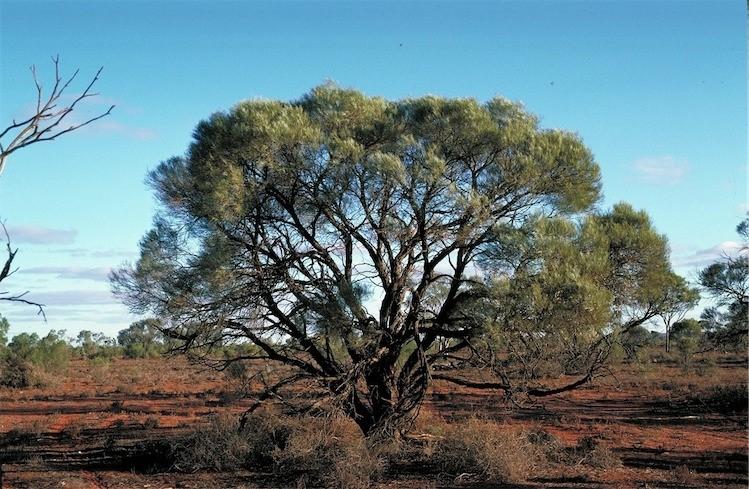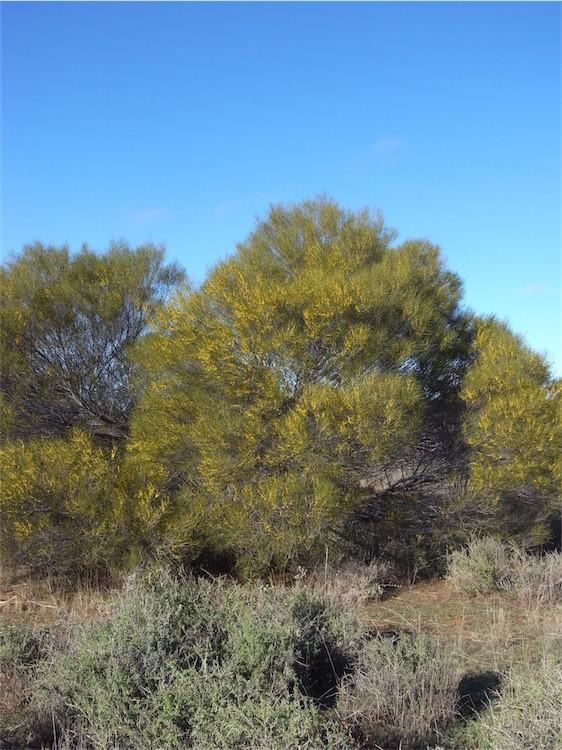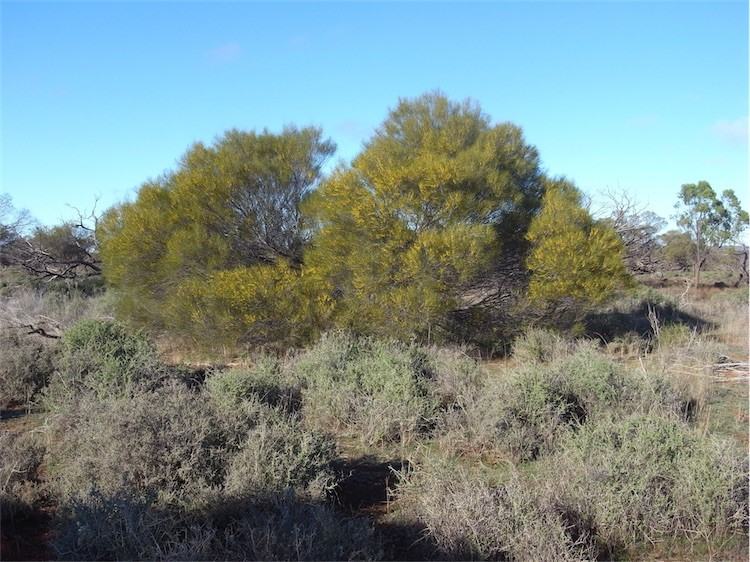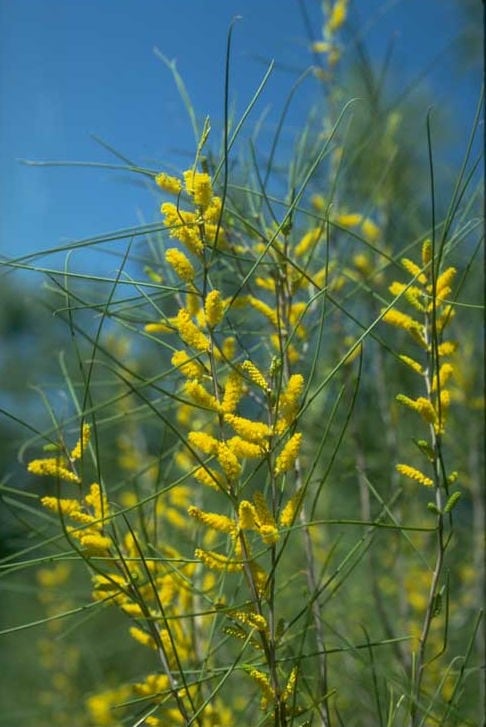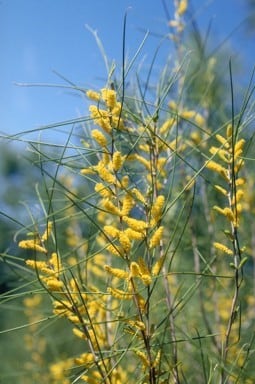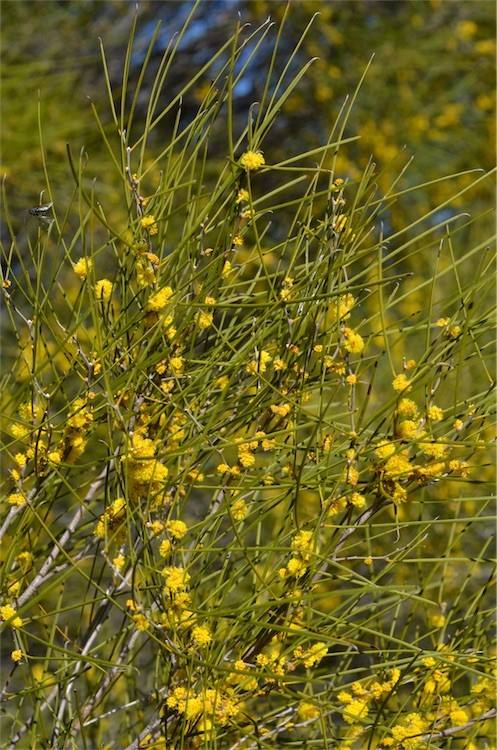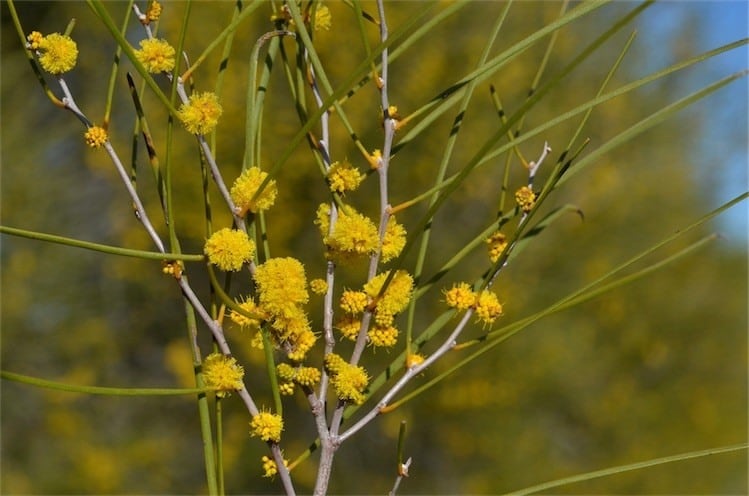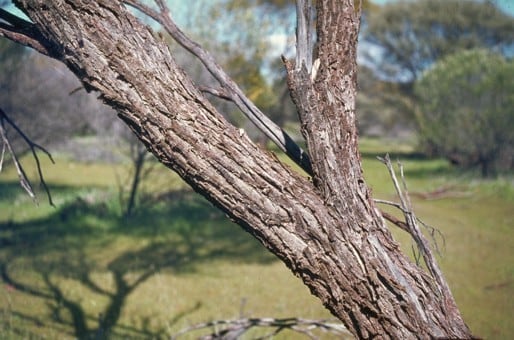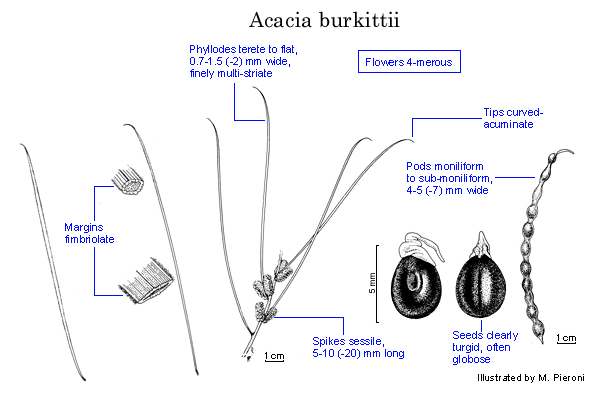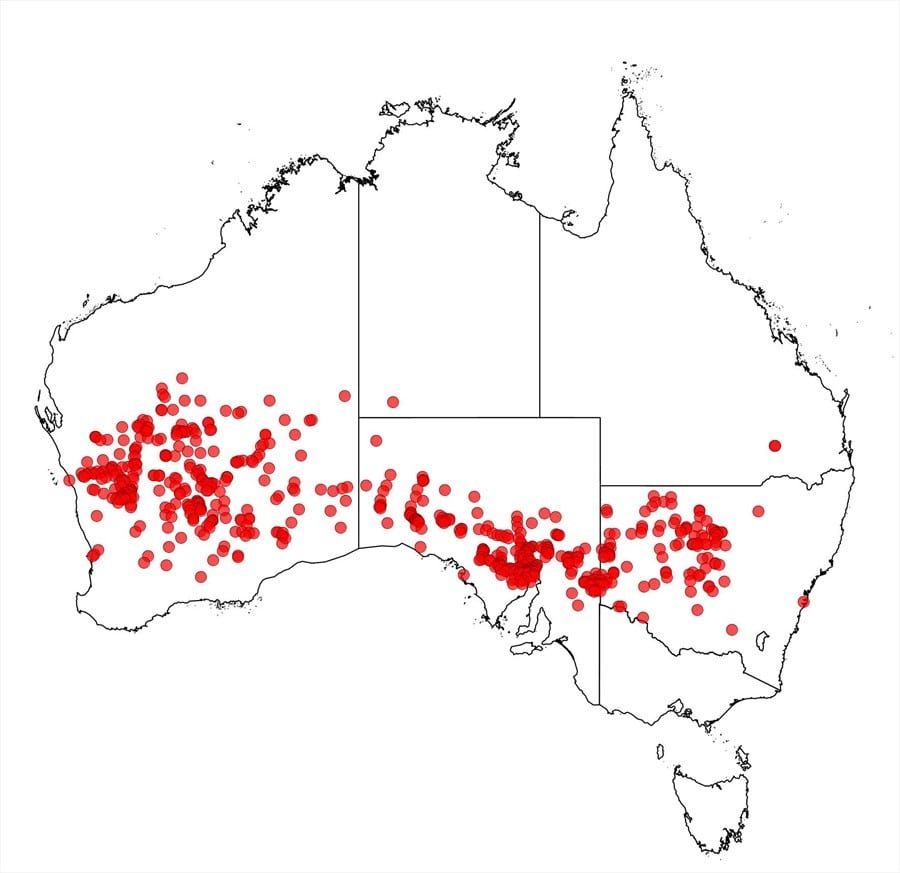Acacia burkittii F.Muell. ex Benth.
WATTLE
Acacias of Australia
Common Name
Burkitt’s Wattle, Gunderbluey, Pin Bush, Sandhill Wattle, Fine Leaf Jam
Family
Fabaceae
Distribution
Occurs in the southern arid zone from near Yalgoo, W.A., E through inland S.A. to the western plains of N.S.W. In W.A. its southern boundary abuts the northern boundary of Acacia sp. Narrow phyllode (B.R.Maslin 7831) (= a narrow phyllode variant of A. acuminata).
Description
Shrub or tree 1.5–5 (–8) high, multi-stemmed or sometimes single-stemmed. Bark fissured and dark brown on main trunks, otherwise smooth. Phyllodes ascending to erect, straight to shallowly incurved, linear-filiform, terete to subterete, quadrangular or flat, (5–) 6–13 (–20) cm long, 0.7–1.5 mm wide, to 2 mm when flat, acuminate by a delicately curved, non-pungent point, normally ciliolate (mainly on upper c. ½, hairs sometimes confined to just near the tips), finely multistriate. Inflorecences simple; spikes obloid to cylindrical, 0.5–1 (–2) cm long, normally sessile, golden. Pods normally moniliform to submoniliform, 4–8 cm long, 4–5 (–6) mm wide, firmly chartaceous to thinly coriaceous-crustaceous, glabrous. Seeds globose or ovate or oblong-elliptic, 3.5–5 (–6) mm long, 3–4.5 mm wide, clearly turgid (3–4.5 mm thick); aril white.
Habitat
Commonly found on plains in red clay-loam or sandy loam (pH 5.5–8) over limestone or a hardpan, in mixed Acacia shrubland with Mulga (A. aneura and its relatives) and/or Bowgada (A. ramulosa). It has also been recorded from coarse sand associated with granite outcrops, low rocky hills, and (especially in the eastern part of its range in W.A.) in open low Eucalyptus woodland.
Specimens
W.A.: near cemetery, Menzies, M.Hancock 314 (NSW, PERTH); 20 km S of Paynes Find on Great Northern Hwy, B.R.Maslin 5587 (NSW, PERTH). S.A.: c. 102 km N of Cook, 28 km N of Abandant Well, N.N.Donner 7241 (AD, NSW); 21 miles [33.8 km] S of Port Augusta, towards Whyalla, M.D.Tindale 426 (AD, CANB, K, L, NSW, US). N.S.W.: Lake Cargellico, Oct. 1906, J.L.Boorman (B, BRI, CANB, CHR, LE, MEL, MO, NY, P, PERTH, PRE, TL, US); Dareton, 19 Dec. 1958, C.Sparke (NSW).
Notes
Notes on distribution, ecology, cultivation and the impacts of sheep and rabbit grazing are provided by D.J.E.Whibley & D.E.Symon, Acacias S. Australia 2nd edn, 274 (1992).
Flat phyllode forms of A. burkittii in W.A. occur mainly along the southern and western edge of the species’ geographic range; in some areas, e.g. around Paynes Find, terete and flat phyllode forms co-occur. These flat phyllode forms can be difficult to distinguish from Acacia sp. Narrow phyllode (B.R.Maslin 7831) in the absence of pods, see B.R.Maslin et al., loc. cit., for discussion. Specimens with the largest seeds (to 6 mm long and 4.5 mm wide) occur around Paynes Find; specimens with the longest spikes (up to 20 mm) are normally found on some plants with flat phyllodes in the Mt Magnet–Meekatharra area, W.A.
Treated as a subspecies of A. acuminata by P.Kodela & M.D.Tindale, Telopea 7(4): 415 (1998) and by NSW, Fl. Australia 11B: 345–347 (2001). However, this taxon exhibits complex patterns of both morphological and genetic variation and until these are better understood it is considered here appropriate to adopt a conservative approach by regarding them as separate species. For further details see B.R.Maslin et al., The Acacia acuminata (Jam) group: an analysis of variation to aid Sandalwood (Santalum spicatum) plantation research (1999, unpublished report). Acacia burkittii is most reliably distinguished from A. acuminata (which scarcely extends to the arid zone) by a combination of its narrow, often non-flat phyllodes, clearly turgid seeds and short flowering spikes.
FOA Reference
Data derived from Flora of Australia Volumes 11A (2001), 11B (2001) and 12 (1998), products of ABRS, ©Commonwealth of Australia
Author
Dr M.D.Tindale and Dr P.G.Kodela with the assistance of M.Bedward, S.J.Davies, C.Herscovitch, D.A.Keith and/or D.A.Morrison
Revised by B.R.Maslin
This identification key and fact sheets are available as a mobile application:
URL: https://apps.lucidcentral.org/wattle/
© Copyright 2018. All rights reserved.
